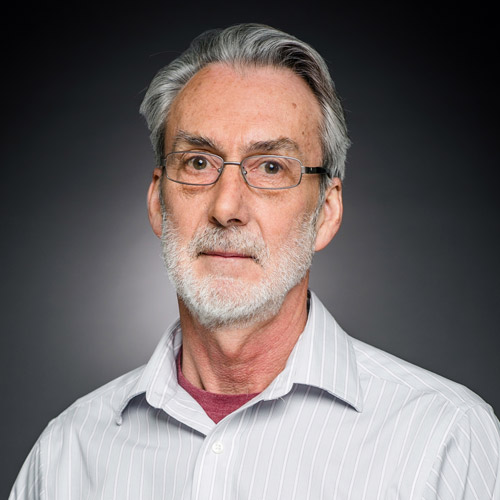The Hacker Who Built BU’s IT
John Porter, architect of University’s computer systems, retires

Long before most people even knew what hacking was, a few computer experts in BU’s information technology department knew that John Porter was good at it. The doctoral student in physics was eager to get his hands on BU’s computer system — an IBM mainframe — and took a job as a computer operator to get to know the system. He quickly mastered it, becoming so good that in 1974 the University asked him to join the IT staff as a systems programmer. “They were fairly enlightened people,” Porter told the BU Bridge in 1997. “They realized that it would probably be better to get me to do things officially than to have me hanging around hacking unofficially.”
Porter (GRS’69,’76) accepted the job, and the precocious programmer spent the next 34 years ushering Boston University into the Information Age. When he retired in March, after 11 years as the University’s vice president for information systems and technology, he left an IT infrastructure that would have been unimaginable, even to him, three decades ago.
“John was among the first people to use computers in computational science,” says Michael Krugman, who worked with Porter for more than 30 years and is now interim vice president for information systems and technology. “He decided to work with computers because he needed them for his research.”
Krugman says it was Porter who was responsible, in the 1970s, for the creation of one of the largest campus-wide e-mail systems in the country. It was also Porter who two decades later boosted the efficiency of BU’s information technology functions by joining together two distinct IT departments, the Office of Information Technology, which oversaw academic computing and the campus network and phone systems, and the Office of University Information Systems, which dealt with administrative computing. Porter was able to envision the benefits, Krugman says, of a unified system.
“We were very lucky to have him,” he says. “One of John’s rare gifts was his ability to take a specific and abstract it to the general. It’s what physicists do. He was one of these guys who could see to the core of how things worked, whether they were people or organizations or nature.”
Glenn Bresnahan, the director of IT’s scientific computing and visualization group and a colleague of Porter’s since the late 1970s, says Porter’s leadership made Boston University one of the outstanding institutions in research computing.
“John was really an incredible person to work for,” says Bresnahan. “His leadership was exceptional and his advice was always clear and well thought out. He was a brilliant person. He could talk on almost any subject in depth. I would have a question, and we would talk for hours about art and science and religion.”
Claudio Rebbi, a professor of physics in the College of Arts and Sciences and the director of the Center for Computational Science, recalls that Porter was always motivated by science. “As the leader of the information technology group, his philosophy was always, if you provide advanced computing resources to the researchers, they will come,” says Rebbi. “It was that spirit that helped enormously in keeping our University at the forefront of computational science. We worked together for years and years, and it was always a great pleasure.”
Art Jahnke can be reached at jahnke@bu.edu.

Comments & Discussion
Boston University moderates comments to facilitate an informed, substantive, civil conversation. Abusive, profane, self-promotional, misleading, incoherent or off-topic comments will be rejected. Moderators are staffed during regular business hours (EST) and can only accept comments written in English. Statistics or facts must include a citation or a link to the citation.